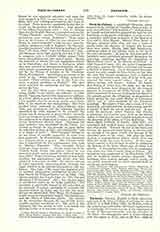

Vavasour, THOMAS, English Catholic physician, pensioner of St. John’s College, Cambridge, b. about 1536-7; d. at Hull, May 2, 1585. On June 25, 1549, at the disputations held before the king’s commissioners at Cambridge, Vavasour was one of the disputants in favor of Transubstantiation and the Sacrifice of the Mass. He subsequently went to Venice where he took the degree of M.D., and on November 20, 1556, he received a licence from the College of Physicians of London to practice for two years. His house was “by the common school house” in the city of York; there Mass was said in 1570. In 1572 he was accused of having entertained Blessed Edmund Campion. In November, 1574, after he had been confined to his own house in the city of York for nearly nine months, he was sent into solitary confinement in Hull Castle. Grindal describes him as “sophistical, disdainful, and illuding arguments with irrision, when he was not able to solute the same by learning”, and adds that “his great anchor-hold was in urging the literal sense of hoc est corpus meum, thereby to prove transubstantiation”. By June, 1579, he was back again in his house, where Mass was again said. Later on he was in the Gatehouse, Westminster, from which he was released on submitting to acknowledge the royal supremacy in religious matters; but he was again imprisoned as a recusant in Hull Castle, York, where he died. His wife, Dorothy, died in the New Counter, Ousebridge, York, October 26, 1587.
JOHN B. WAINEWRIGHT

